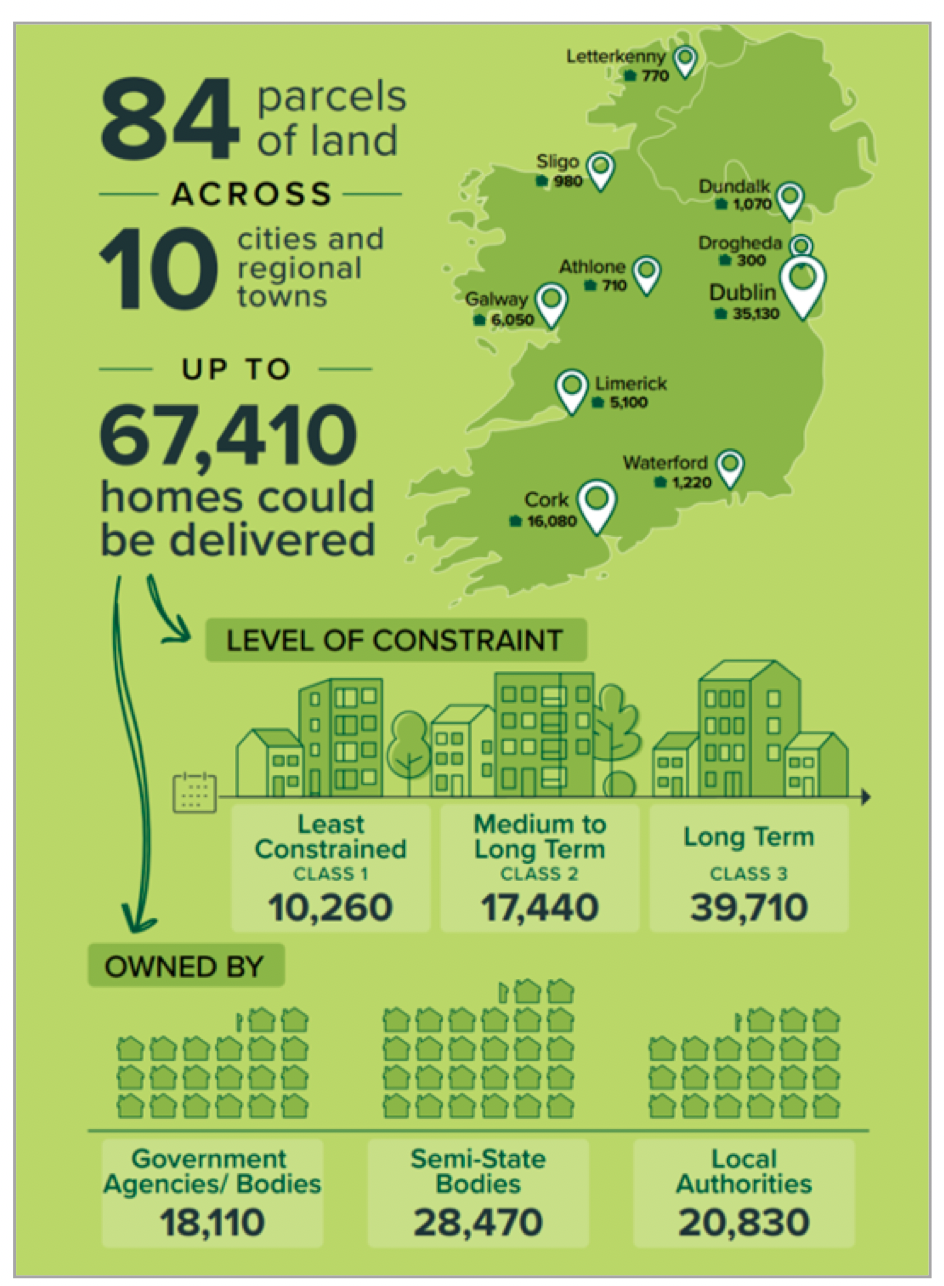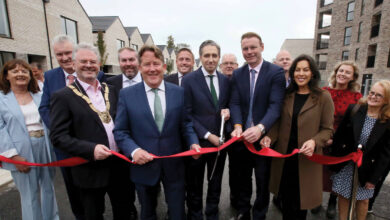LDA Report on Relevant Public Land

The Land Development Agency (LDA) launched its first Report on Relevant Public Land in March 2023. The report explores the potential of state-owned land to deliver much needed affordable and social housing into the future.
The report identifies 83 state-owned sites and assesses them as having the potential to deliver up to 67,000 homes in the medium to long term. The report utilises the findings of the Register of Relevant Lands which identifies all of the land owned by public bodies.
The report, the first of its kind, is a statutory report and advisory in nature. It is required by Section 52 of the LDA Act 2021 which states that the LDA is obliged to provide the Government with a report on “relevant public land”, which comprises land owned by “relevant public bodies”. The report identifies a potential pipeline of sites to support the delivery of affordable homes into the future.
Relevant public land is land owned by state bodies in settlements with a population of greater than 10,000 persons rounded to the nearest 500. There are currently some 48 settlements meeting this criteria, ranging from Gorey, County Wexford (population: 9,822) to Dublin city and suburbs (population: 1,173,179). The number of settlements meeting these criteria is likely to increase as a result of Census 2022.
The report will comprise multiple phases, of which the version published in March is the first. The LDA will provide further reports at least every two years to government. To ensure a priority focus on areas of greatest need and projected future growth, the first report focused on the five cities – Dublin, Cork, Limerick, Galway, and Waterford – and the five regional growth centres – Drogheda, Dundalk, Athlone, Letterkenny, and Sligo.
In total, these cities and growth areas account for approximately 75 per cent of the relevant public land identified nationally. Focusing on these settlements in the first instance is consistent with the National Planning Framework objectives to achieve compact and sustainable growth and balanced regional development.
The remaining settlements with a population of over 10,000 will be considered as part of the LDA’s next report to Government, due in 2024.

To produce this report, the LDA examined all of the state-owned sites in the ten key urban areas. All sites not suitable for the delivery of new homes were removed and the remainder were assessed against criteria such as zoning, flood risk and proximity to transport and other facilities including schools and retail developments.
Subsequently, sites were given a classification depending on the levels of constraints that existed on each site. The classification indicates which parcels of land, in the LDA’s assessment, involve less or more constraints when it comes to their potential for the development of housing.
Class 1 sites are regarded as less constrained with potential for progression to development for residential delivery in the short to medium term. Class 2 sites are regarded as appropriate for development subject to overcoming certain constraints, for example, rezoning or relocation of existing uses. Class 3 sites are generally large and complex long-term sites that are considered to have the potential for residential development but involve several existing constraints. These sites generally require a plan led approach such as preparation of a framework or masterplan together with the provision of significant infrastructure to support unlocking. The availability of all sites is subject to further due diligence and a Government decision to progress the sites for delivery of housing.
High level estimates for the number of potential new homes, indicative costs of development and of infrastructure are all included in the report. The report does not include any costs involved in the purchase of land or for relocating existing premises if such action is required. The development costs are calculated estimates based on existing cost data and will require review and updating over time.
It should be noted that not all of the sites listed in the report will ultimately be developed for affordable housing. Many are currently in part or operational use and the public bodies involved may seek to retain the sites for existing operational purposes. By including sites in the report, the LDA is not stating that they should be developed, but rather inviting consideration by government of their potential use for affordable and social housing delivery.
Register of Relevant State Lands
The LDA has also completed a national state lands database, which includes all land owned by the State nationally and which is also available online on the LDA website at www.lda.ie.
Relevant public land is defined in the LDA Act as: “All land within a census town owned by a relevant public body. A census town is any urban area with a population over 10,000 accurate to the latest census information.”
A relevant public body is defined in the LDA Act to include Schedule 1 bodies – non-commercial public bodies/agencies and government departments; Schedule 2 bodies – commercial public bodies/agencies; and Local Authorities.
The LDA Act 2021 allows for land to be treated in different ways depending on what schedule the owning body is in. The Act states that a relevant public body shall not dispose of relevant public land unless it has given notice and offered the land for sale to the LDA. In the case of Schedule 1 bodies, the government may decide that relevant public land identified in the Report on Relevant Public Land shall be acquired by the LDA.

The Land Development Agency
2nd Floor, Ashford House, Tara Street, Dublin, D02 VX67
T: +353 1 9103400
W: www.lda.ie





